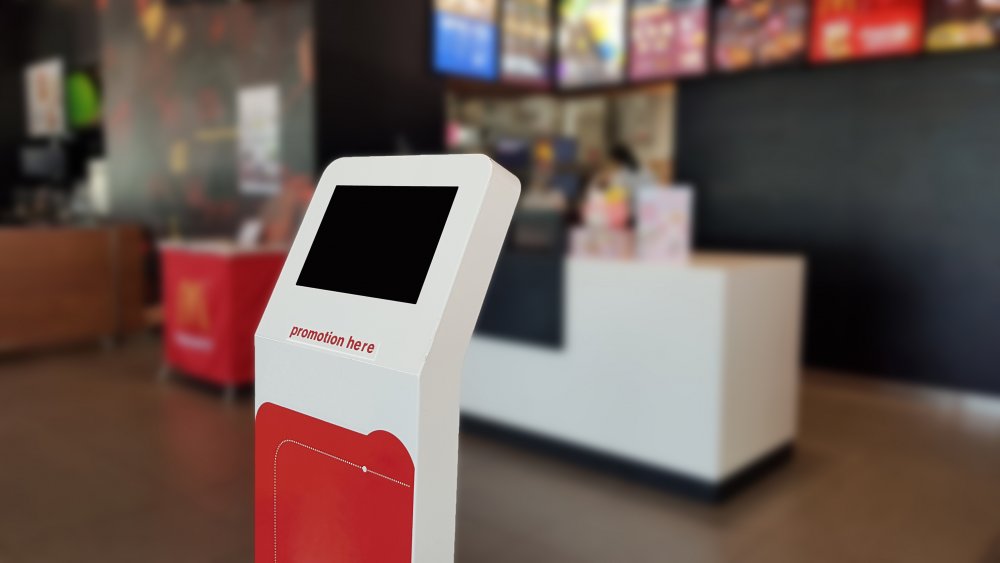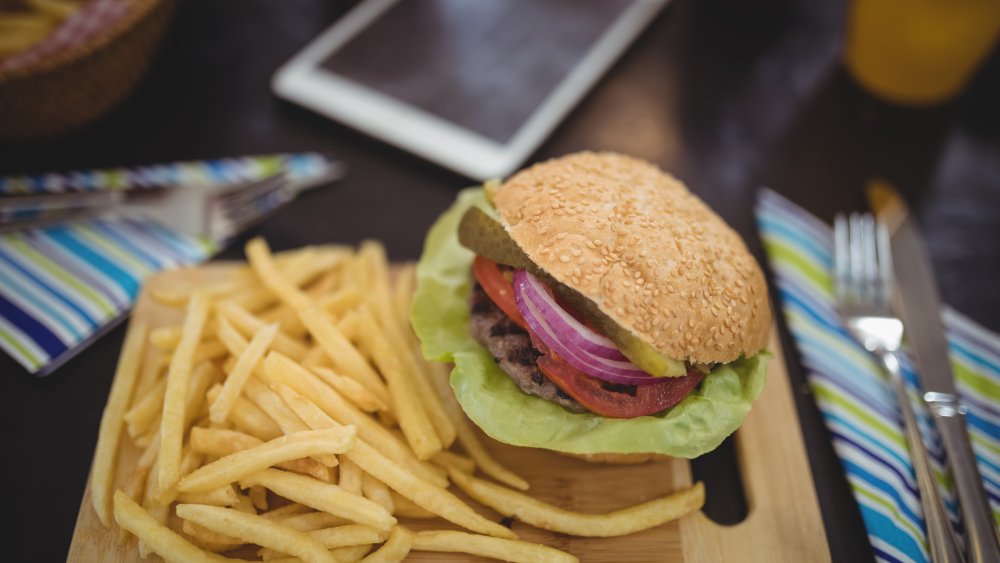The Futuristic Way You Might Be Ordering Fast Food Soon
Just a year ago, in the pre-pandemic era that now seems like a lifetime ago, fast-food restaurants were embracing self-order kiosks (via Forbes). They were another example in the business world of machines replacing humans. Not only do the kiosks speed up workflow for fast-food employees, but people actually spend more money when they order on a screen rather than talking to a human being. After all, people might judge you if you say out loud that you want both a milkshake and a large soda.
One year later, COVID-19 has made us all uncomfortably aware of how often we touch things, like a self-service soda fountain, whenever we manage to venture out for groceries or fast food. If we're not handing our debit card to a drive-thru attendant (and expecting to get our card handed back to us with a raft of coronavirus on board), then we are touching a card reader when we pay. And if fast-food dining rooms are even open in our area, then those fancy new self-order kiosks are undoubtedly roped off so we can't get near them.
The shine has worn off the exciting new touchscreen self-ordering technology, as the allure has been overshadowed by other people's germy fingerprints. It looks like McDonald's, Wendy's, Subway and the rest will have to find new technology, even before they got around to fully adopting touchscreens.
Touchless 'touchscreens' may be coming to a restaurant near you
This is where companies like Ultraleap come in. They're developing screens you literally don't have to touch to get your point across. Touchless touchscreens use infrared cameras to track your hand's motion, along with ultrasonic speakers so your hand can feel when it has "touched" a menu selection on the screen (via Design News). "It's really easy to use," Tom Carter, chief technology officer at Ultraleap, told the Financial Times. "You can carry on using these screens and don't have to learn anything new."
The touchless screen has other applications, too. Ultraleap's technology is already being installed in cinema lobbies, so moviegoers can interact with digital movie advertising with a wave of the hand, according to the Financial Times. The carmaker Jaguar Land Rover is developing touchless dashboard controls that read both hand and eye movements, to figure out whether we're trying to turn up the AC or the music.
iPhone owners shouldn't be surprised if the device that introduced us all to touch in the first place goes touchless someday. Apple acquired a company that showed off promising gesture-recognition technology way back in 2013 (via Display Daily). Touchless technology has been in the works for years, but COVID-19 might give it the real boost it needs to become part of our everyday lives. And unless you're in the market for a Land Rover, your first experience with touchless technology may happen while ordering a Quarter Pounder.

